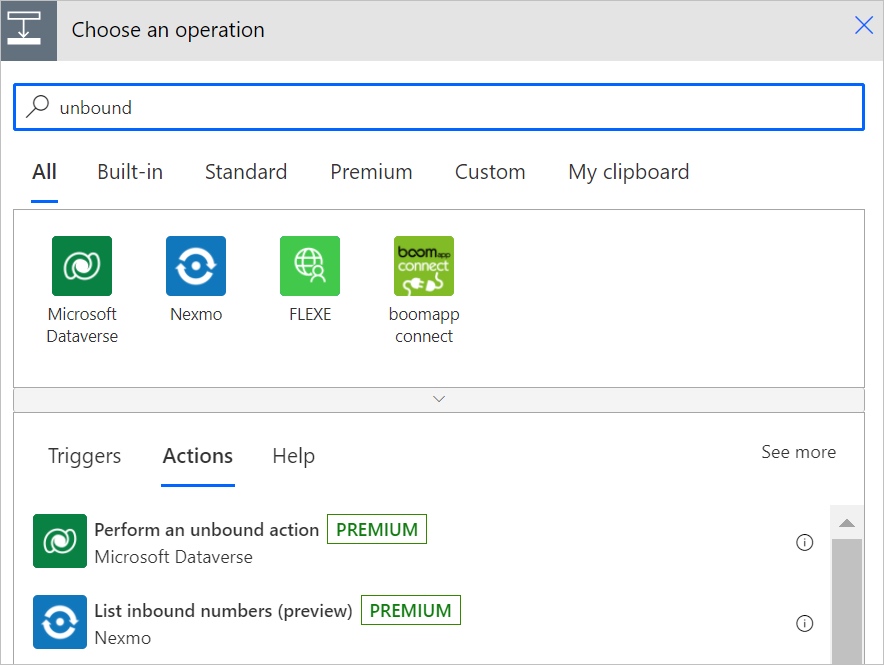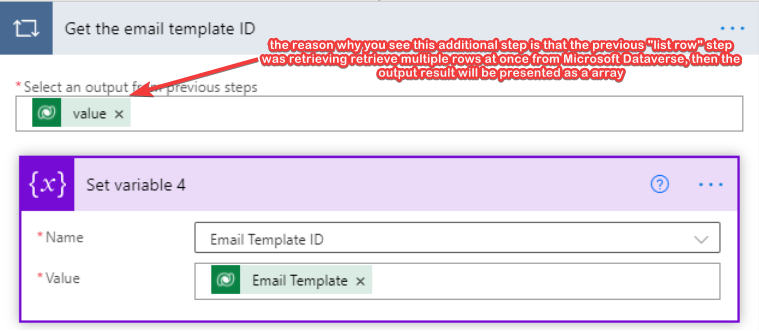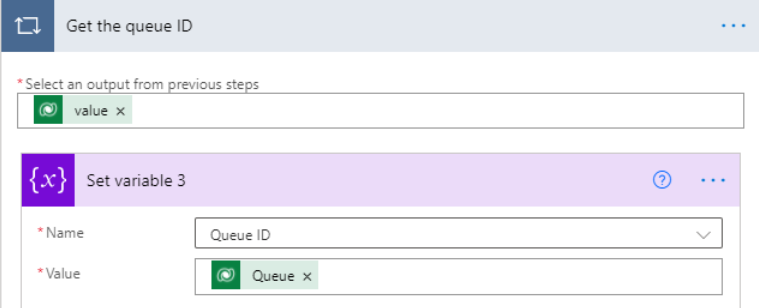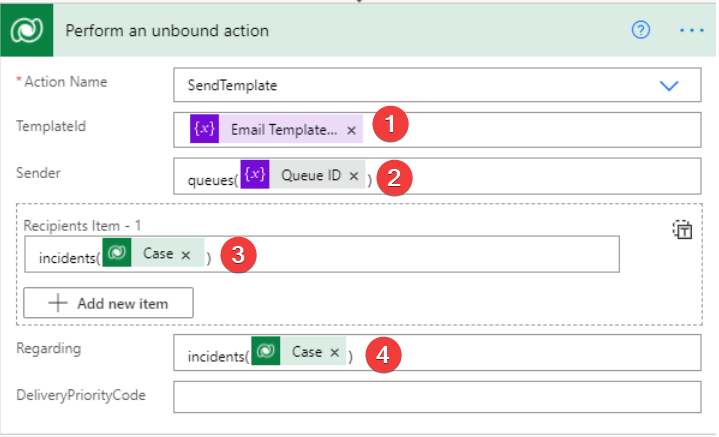How to perform an unbound action
Unbound actions aren’t bound to a table and are called as static operations. Unbound actions are performed on the entire environment, not on specific tables or rows.
To perform an unbound action in your flow, add Perform an unbound action to your flow.
Follow these steps to edit one of your flows to perform an unbound action.
- After any step in your flow, select Add new step.
- Enter unbound in the search box, select Microsoft Dataverse from the list of connectors, and then select Perform an unbound action.
- Add an unbound action to your flow by typing the name "Perform an unbound action" in the search box.

- In Action name, select an action.

Enter or select any of the optional details on the Perform an unbound action card.
Save, and then run your flow.
Confirm that the unbound action completes successfully.
Scenario: Sending an auto-reply email using a email template
Assumption before below steps, you already create a case record through one action step of this Power Automate flow
1. Initialize the variable for storing the email template GUID
Select "Initialize variable" step (this variable will be used to store the Email template GUID)
step 1 enter a name for the variable
step 2 set up the data type for this variable (it is important otherwise you will see error moving forward, as the variable can’t store the value that it is not set for)

2. Select "List rows" step of Dataverse
choose Email Templates table(entity), then in the text box for Filter rows(Use to define an OData-style filter expression to narrow down the set of rows that Dataverse returns), enter title eq ’email template name’

3. Set variable
try to add dynamics content to the value text box by searching for unique identifier of the email template (GUID of the email template record that was found by the previous step)

4. Repeat the same steps 1 to 3, in order to get the GUID of the queue record that we’re looking for



5. Select the action called "SendTemplate"
step 1 Add the Email Template ID variable to TemplateId
step 2 Add the Queue ID variable to Sender
step 3 if you try to send the email to the case related customer, then you can just add the Case entity logic name as well as the GUID of the case record that was created in the previous step of this flow (please note the logic name must be plural)
step 4 Associate this email record with the related case record




0 comments:
Post a Comment